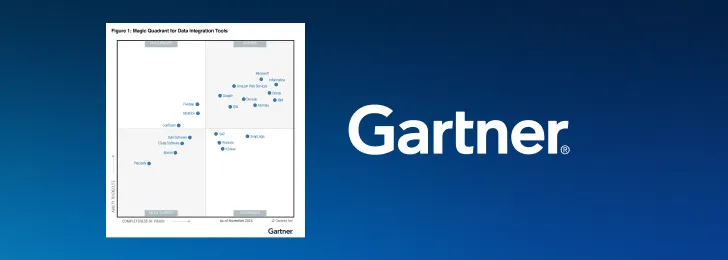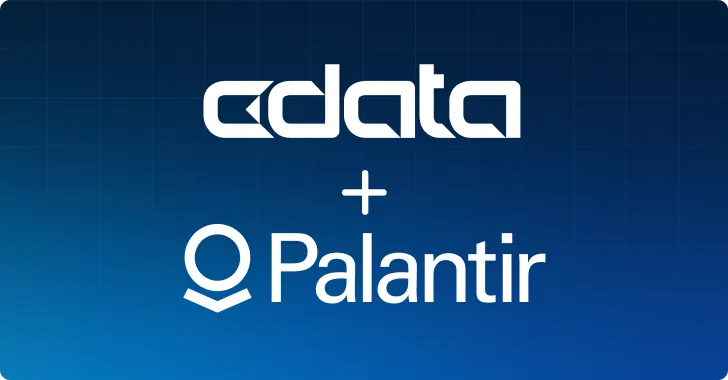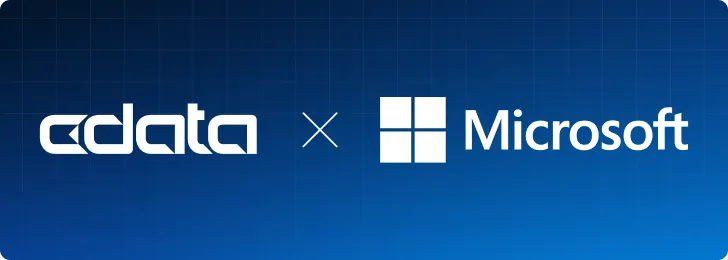
Is your organization’s data actionable when your teams need it? Today, data fuels and shapes nearly every decision throughout a business, but for your organization’s data to be actionable, it first must be accessible.
A recent 451 Research survey revealed that organizations face barriers to leveraging their data across anywhere from 11 to upwards of 500 silos.
Data replication and real-time connectivity are both increasingly important to connect, integrate, and work with the data you need. Whether on-premises or in the cloud, both can solve similar data challenges and offer access to data you couldn’t before.
However, in some scenarios, it may make more sense to choose or even combine these methods. Since you may need to take different ways to address similar data use cases or support the same teams in multiple ways, let’s explore when organizations are using each.
What is real-time data replication?
Real-time data replication is the continuous process of copying data from a source system to a target system instantly as changes occur. It involves three main components: data ingestion, which captures data from the source; data integration, which combines data from different sources into a coherent dataset; and data synchronization, which ensures that data in different locations is consistent and up to date.
This process ensures that the target system (often an analytical data store) remains synchronized with the sources (business applications, transactional databases, and more), providing timely information across multiple locations.
Benefits of using real-time strategies to replicate data include:
- Enhanced data reliability: Ensures data is always available and accurate, even during system failures.
- Increased consistency: Maintains uniform data across all nodes, preventing discrepancies.
- Minimized data redundancy: Efficiently manages storage by avoiding unnecessary data duplication.
- Improved disaster recovery: Facilitates rapid recovery by maintaining up-to-date replicas.
- Optimized performance: Balances load and reduces latency by distributing read operations across replicas.
When organizations use data replication
For many organizations, data replication is a time-tested method for copying mass volumes of data across multiple silos into a fast, scalable data repository. Organizations typically leverage a data pipeline to extract, transform, and load (ETL) their data into a data warehouse, database, or data lake.
Data replication’s preemptive approach allows organizations to prepare large amounts of data for anticipated scenarios. The process enables organizations to tailor and move their data sets consistently and automatically for processes like reporting and forecasting. Additionally, repositories house and process data away from the original sources, allowing users to work with data without straining the performance of these production-level systems.
When data replication makes sense
Since replication typically updates data copies in timed batches, organizations apply it where aged data is still viable. Organizations also support workflows more successfully and manage warehouse storage easier if they know in advance what data needs to be replicated.
Data migration, scheduled data compatibility conversions, cross-domain reporting, historical reporting, and legacy system queries with long running times are some examples of ideal replication uses. For instance, a sales team may schedule 5-minute incremental updates to convert CRM data from a REST API format to an Excel table file.
When to use real-time data connectivity
As operations decisions become more data-driven, real-time data connectivity presents a newer, dynamic approach to answering business questions quickly.
Organizations are leveraging modernized SQL-based connectivity solutions to probe directly across multiple data sources in real time — even across non-database sources.
Real-time data connectivity acts in an ad hoc approach to allow organizations to rapidly resolve unforeseen business questions. It allows organizations to analyze and use data without moving or processing the data in advance – keeping it from going stale before use. To achieve this, the platform aggregates responses to data requests (i.e. queries) from multiple sources.
When real-time connectivity helps you work better
Direct real-time connectivity supports scenarios where organizations want to minimize storage costs, development resources, and data management tasks. Many of these use cases leverage smaller amounts of on-demand data since no preplanned moves are necessary to make data useable.
Live data reporting, sensitive data that cannot be copied per regulations, and data exploration are common uses for real-time connectivity. For instance, marketing teams could establish direct connections with Google Analytics, Pardot, and social media to build a Tableau dashboard for aggregated, live SEO reporting.
When to use real-time data replication
In practice, replication and real-time connectivity are complementary. Not just "or" choice, replication and real-time connectivity can work together fill gaps left by the other.
Consider how finance may need both periodic and on-demand reporting. A replication pipeline can support quarterly and annual financial reports from aged data because this workflow does not require constant updates. Meanwhile, real-time connectivity can allow the CFO to aggregate data and deliver instant profit & loss (P&L) statements.
Data replication strategies: 5 methods to obtain real-time data replication
Real-time data replication is essential for maintaining synchronized and up-to-date information across multiple systems. Various methods can achieve this, each with advantages and specialized use cases. Five of the most popular methods are:
- Built-in replication mechanisms: Many databases, such as MySQL and PostgreSQL, offer native replication features. These built-in tools provide efficient, reliable, and easy-to-configure options for real-time data replication.
- Continuous polling methods: This technique involves regularly checking the source database for changes. Although it can be resource-intensive, it ensures that the target database is updated in near real-time.
- Trigger-based custom solutions: Custom triggers can be implemented to capture and replicate changes instantly as they occur in the source database, providing highly responsive data replication.
- Transaction logs: By reading and applying changes from transaction logs, this method ensures that all updates are captured and replicated accurately, supporting high data integrity and consistency while leveraging the built-in CDC (change-data-capture) features of the source and target.
- Cloud-based mechanisms: Cloud services like AWS Database Migration Service and Azure Data Factory offer scalable, flexible options for real-time data replication, often with additional features like automated scaling and monitoring.
Replication and real-time connectivity with CData
Data is complex, and businesses must adopt different methods of working with their data in different ways. To support your data initiatives, CData provides data connectivity and integration solutions that complement your unique needs. Our roster of sized-to-fit options support live data access, data consolidation, or a combination of both.
Want to learn how our data replication and real-time connectivity solutions support powerful, self-service data access? Reach out to one of our data experts today.





